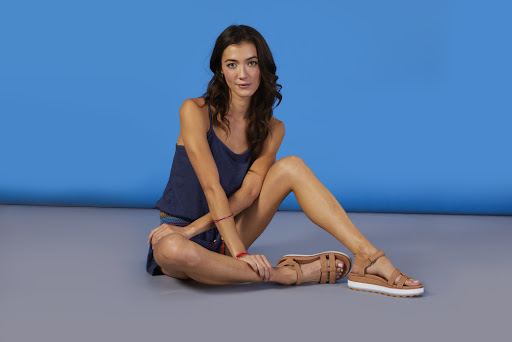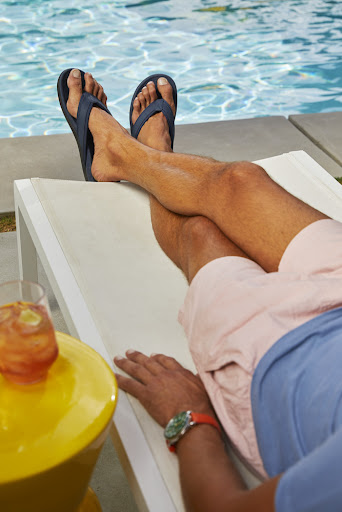When it comes to claw toe, you may know it when you see it. This condition, also known as claw foot, is a podiatric ailment that causes toes to assume a curved, rigid position resembling a claw.
Whether people with claw toe are born with it or develop the toe deformity over time, this can be a frustrating condition to live with. However, the discomforts that come with claw foot can be remedied with some targeted interventions and lifestyle adjustments.
This guide will serve as your claw toe handbook (or should we say, footbook?), identifying what causes the condition, how to know if you have it, and the adjustments you can make to keep your feet looking and feeling on top of the world.
What is Claw Toe?
When a person has a claw toe, their “lesser” toes (any toe other than the primary one) exhibits dorsiflexion (raising up) while their primary toes exhibit flexion (pointing down).1 Often confused with hammer toe or mallet toe, This muscular arrangement causes their foot to look like a claw.
Though the condition itself poses no serious health consequences, it’s important to diagnose and treat the claw toe properly so that the toe deformity does not progress. People with claw foot typically move through two distinct stages of their condition’s development:2
- Flexible – If you take notice of your claw foot early, you may be fortunate enough to catch your claw foot at the flexible stage, when it may be most responsive to treatments like surgery. At this phase, your joints still have some mobility (even if they feel tense or crunchy to move).
- Rigid – The rigid stage occurs when the claw foot has progressed to its most severe phase of development. This is when toes become completely immobilized, permanently bent into a claw-like position.
Claw Toe Symptoms
Most people notice they have claw toe deformity based on visual tip-offs. While most people’s toes lie relatively flat, the podiatric morphology of claw toe sufferers can inhibit mobility and make it difficult to plant their feet firmly on the ground.
Additionally, people with claw toe may experience the following symptoms:3
- Blisters
- Calluses
- Corns
- Difficulty finding comfortable shoes
- Physical discomfort
- Swelling
What Causes Claw Toe?
As with other foot problems, whether that may be a stone bruise, bunions, etc, it’s important to understand what causes a claw toe. At its core, claw toe is a muscular abnormality affecting the foot’s kinesiology or the mechanics involved in its range of motion. When a person has a claw toe, their toe muscles over-contract, putting excessive pressure on their tendons and causing their joints to bend (and stay that way).
That said, two factors are usually to blame for causing or aggravating most cases of claw toe. These are:2
- Genetics – In some cases, claw foot may be a congenital illness, meaning, it was present at birth due to an individual’s genetic inheritance. If you or a loved one has been living with claw toe for life, it’s all the more important to adapt your lifestyle to provide optimal comfort and slow the illness’s progression.
- Poorly-fitting shoes – Wearing shoes that don’t do right by your feet is seldom the root cause of claw foot, but it can significantly aggravate the physical discomfort associated with deformities like it.4 If you routinely use footwear that leaves you pining for the moment you arrive home and can take them off, it’s time to find a pair that offers more support.
In more rare cases, claw toe may be a symptom of an underlying illness. People with the following ailments may experience claw toe:2
- Arthritis
- Cerebral palsy
- Diabetes
- Foot trauma or injury
How Is Claw Toe Treated?
There’s a reason why claw toe has another alias known as claw foot. Claw toe is a condition that can range widely in severity, affecting just one of your foot’s digits (in mild cases) or limiting your entire foot’s range of motion permanently (in severe cases).
For this reason, foot specialists may recommend various treatment protocols for claw toe. Most of them fall into the following two categories:2
- Non-surgical – Non-surgical treatment and interventions for claw toe may be recommended for mild cases. These may include lifestyle adjustments, behavioral changes, or physical therapy interventions (we’ll dig into some of these below).
- Surgical – When claw toe shows signs of progressing to the rigid stage of development, providers may recommend surgery. There are four main types of surgery that may be recommended for people with claw toe:
- Inserting a steel rod into the toe to maintain a flat posture while it heals
- Lengthening and rerouting tendons of the feet
- Truncating bones of the toes
- Fusing toes together
How to Prevent and Soothe Claw Toe
The most challenging part about living with a claw toe is the physical discomfort it can cause.
Fortunately, there are some reliable, non-surgical treatment strategies for relieving physical discomfort. Let’s dip a toe into two ways to improve your quality of life and help you put your best foot forward while living with claw foot.
Find The Right Footwear
Just as poorly-fitted and tight shoes can exacerbate claw toes, well-fitting ones can work wonders for alleviating foot pain and getting them back on track.
Orthotics can present great benefit for claw toe, but the best types of shoes for individuals with claw toe should also be designed with:2
- A wider fit – No matter how many of your toes are affected by claw toe, always ensure the shoes you wear have sufficient room for each of them to feel comfortable. Too-tight toe boxes can lead to skin inflammation, blisters, and ulcers—not to mention aggravating your claw toe—so opt for wide-set designs that give your feet liberal breathing room.
- Arch support – While shoes aren’t corrective in and of themselves, shoes designed with arch support can significantly enhance your comfort levels if you have a podiatric abnormality like claw toe. If you experience joint pain alongside claw toe, arch support can help shoulder some of the body weight shouldered by your feet, encouraging proper alignment and curbing some of your discomforts.
- Cushioned soles – As critical as arch support is for reducing pain, a cushioned footbed is just as essential for softening the impact a day on your feet can bear on claw toes. To give your toes some extra TLC, look for designs that use multiple textures to soothe pressure points that can hold excess stress in your toes and feet.
Lastly, if there’s any type of footwear to steer clear of, it’s shoes that feature an elevated heel. While high heel shoes and stilettos may appear fashion-forward, one 2018 survey discovered that as many as 72% of people habitually wear ill-fitting shoes, leaving them vulnerable to developing podiatric issues in the short- and long-term.
Fortunately, there are countless stylish flats and loafers, sandals, and platforms that give feet the royal treatment, no matter what podiatric issues they may be contending with. So whether you’re looking for sneakers, flats, or walking shoes for women, you can still find the right shoe to support your feet.
Exercise Your Feet
In many cases, physical therapy exercises can work wonders to pare down pain and discomfort caused by conditions like claw toe.
Here are a few simple exercises and foot stretches to help you find relief:
- Toe stretch with props – While you can pull, tug, and stretch your toes manually, you may have an easier time finding that “Ahhh!” with a few props to help you along. Find an object with some elevation, like a yoga block, tennis ball, or even a thick book. Place it on the floor and rest your toes on it, so the ball of your foot maintains contact with the floor while your toes scale up the object.3
In this position, play with moving your body weight towards and away from the prop to increase or decrease the pressure exerted on your toes. The more you lean towards the prop, the greater the stretch you’ll feel.
- Toe pick-ups – Many physical therapists suggest toe pick-ups to improve joint mobility and keep your feet muscles in good condition. In this exercise, find a small, dimensional object like a marble, die, or even a board game piece. Practice picking the object up with your toes and putting it back on the ground. With a little practice, you may even be able to beat your friends with no podiatric conditions!
- The towel sit – Occasionally, the rigidity that can accompany claw toe can crawl further up the leg and cause discomfort. If you’re looking to find solace in your ankles or calves, try this exercise: roll up a bath or beach towel width-wise and assume a kneeling position. Then, place the rolled towel at the crook where the heel of your foot becomes your ankle.
Sit on the towel and adjust your weight until you find a satisfactory pressure point. Continue moving the towel gradually up the calf, then sit back, to massage as much of your leg as feels comfortable.
Find Comfort with Vionic
Claw toe can be a frustrating condition to live with, but by adjusting your footwear and treating your feet with kindness, finding relief is well within your reach (even if it’s by playing toe pick-up!).
Vionic footwear is designed to bridge that gap between style and support. Whether you’re looking for a polished flat to take to work or a recovery sandal to loaf the weekend away, browse our full range of men’s and women’s designs to treat your toes to the support they deserve.
Sources:
- De Orio, James. “Claw Toe.” Medscape. 5 February, 2021. https://emedicine.medscape.com/article/1232559-overview
- “Claw Toes.” Cleveland Clinic.https://my.clevelandclinic.org/health/diseases/16875-claw-toes
- Yoon, Joe. “6 Foot, Toe, and Ankle Stretches to Improve Your Yoga Poses.” Yoga Journal. 31 March, 2021. https://www.yogajournal.com/practice/6-foot-and-ankle-stretches-to-improve-your-yoga-poses /
- “Claw foot.” Medline Plus. https://medlineplus.gov/ency/article/003168.htm
- Vanderheiden, Terence. “Why It’s Important to Wear the Right Shoe Size.” Verywell Health. Updated 7 December, 2020. https://www.verywellhealth.com/do-people-wear-correct-size-shoes-1337769





Leave a Reply